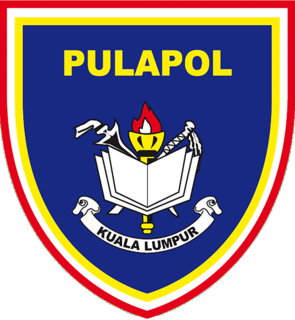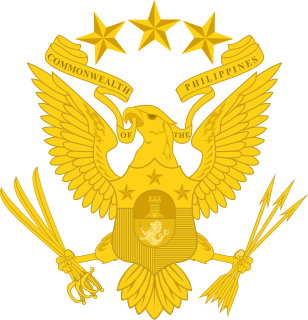
The Royal Australian Navy (RAN) is the principal naval force of Australia, a part of the Australian Defence Force (ADF) along with the Australian Army and Royal Australian Air Force. The Navy is commanded by the Chief of Navy (CN), who is subordinate to the Chief of the Defence Force (CDF) who commands the ADF; the current CN is Vice Admiral Michael Noonan. The CN is also directly responsible to the Minister of Defence, with the Department of Defence administering the ADF and the Navy.

The British Commonwealth Air Training Plan (BCATP), or Empire Air Training Scheme (EATS) often referred to as simply "The Plan", was a massive, joint military aircrew training program created by the United Kingdom, Canada, Australia and New Zealand, during the Second World War. BCATP remains as one of the single largest aviation training programs in history and was responsible for training nearly half the pilots, navigators, bomb aimers, air gunners, wireless operators and flight engineers who served with the Royal Air Force (RAF), Royal Navy Fleet Air Arm (FAA), Royal Australian Air Force (RAAF), Royal Canadian Air Force (RCAF) and Royal New Zealand Air Force (RNZAF) during the war.
Second lieutenant is a junior commissioned officer military rank in many armed forces, comparable to NATO OF-1a rank.
An officer candidate school (OCS) is a military school which trains civilians and enlisted personnel in order for them to gain a commission as officers in the armed forces of a country. How OCS is run differs between countries and services. Typically, officer candidates have already attained post-secondary education, and sometimes a Bachelor's degree, and undergo a short duration of training which focuses primarily on military skills and leadership. This is in contrast with a military academy which includes academic instruction leading to a bachelor's degree.

The Royal Naval Reserve (RNR) is one of the two volunteer reserve forces of the Royal Navy in the United Kingdom. Together with the Royal Marines Reserve, they form the Maritime Reserve. The present RNR was formed by merging the original Royal Naval Reserve, created in 1859, and the Royal Naval Volunteer Reserve (RNVR), created in 1903. The Royal Naval Reserve has seen action in World War I, World War II, the Iraq War, and War in Afghanistan.

Conscription in Australia, or mandatory military service also known as National Service, has a controversial history dating back to the first years of nationhood. Australia currently only has provisions for conscription during times of war when authorised by the governor-general and approved within 90 days by both houses of parliament as outlined in Part IV of the Defence Act 1903.

Military service is service by an individual or group in an army or other militia, whether as a chosen job (volunteer) or as a result of an involuntary draft (conscription).

Compulsory military training (CMT), a form of conscription, was practised for males in New Zealand between 1909 and 1972. Prior to and after this period military training in New Zealand has been voluntary.

National Service (NS) is a term that describes the national policy in Singapore that requires all male Singaporean citizens and second-generation permanent residents to serve a period of compulsory service in the uniformed services when they reach the age of majority, although women may also volunteer. It was first instituted in 1967 shortly after its independence to help build Singapore's military forces and guarantee its continued sovereignty, and has since been expanded to involve the police and civil defence force as well. Conscripts make up the majority of the manpower in the Singapore Armed Forces (SAF).

The National Service Act 1964 (Cth) is a repealed amendment of the Parliament of the Commonwealth of Australia, passed on 24 November 1964. It amended the National Service Act 1951 to require 20-year-old males to serve in the Army for a period of twenty-four months of continuous service followed by three years in the Reserve.
The following lists events that happened during 1951 in Australia.
The British Commonwealth Far East Strategic Reserve was a joint military force of the British, Australian, and New Zealand armed forces. Created in the 1950s and based in Malaya, the FESR was conceived as a forward defence point for Australia and New Zealand, while protecting Commonwealth interests in the Southeast Asian region from both internal and external communist threats. The FESR was made up of an infantry brigade and a carrier group, supported by squadrons of aircraft.

The Malaysian Police Training Centre is the oldest police academy in Malaysia and the training institute for Royal Malaysia Police. It is located at Semarak Street, Kuala Lumpur. It is the place where the police is trained under the government. Learning in Pulapol encompasses training aspect, from academic or practical. Pulapol has seven branches: Pulapol Jalan Semarak, Kuala Lumpur, Pulapol Bukit Sentosa, Rawang, Pulapol Air Hitam, Negeri Sembilan, Pulapol Segamat, Johor, Pulapol Langkawi, Kedah, Pulapol Dungun, Terengganu, Pulapol Kota Kinabalu, Sabah and Pulapol Kuching, Sarawak. The police trainees will be guaranteed to have a job and will be trained for six or nine months there.
The New Zealand armed forces saw action in Malaysia throughout the 1950s and 1960s, first as part of the British Commonwealth response to the Malayan Emergency, and then in defence of Malaysia in the Indonesia–Malaysia confrontation.

In the United Kingdom, conscription has existed for two periods in modern times. The first was from 1916 to 1920, the second from 1939 to 1960, with the last conscripted soldiers leaving the service in 1963. Legally designated as "Military Service" from 1916 to 1920, and as "National Service" from 1939 to 1960. However between 1939 and 1948, it was often referred to as "war service" in documents relating to National Insurance and pension provision.

Women currently make up 19.2% of the ADF workforce. Women have served in Australian armed forces since 1899. Until World War II women were restricted to the Australian Army Nursing Service. This role expanded in 1941–42 when the Royal Australian Navy (RAN), Australian Army and Royal Australian Air Force established female branches in which women took on a range of support roles. While these organisations were disbanded at the end of the war, they were reestablished in 1950 as part of the military's permanent structure. Women were integrated into the services during the late 1970s and early 1980s, but were not allowed to apply for combat roles. In January 2013, serving women were allowed to apply for all positions in the Australian Defence Force (ADF) except special forces which became open to women in January 2014. In January 2016, civilian women became able to direct entry to all positions.

The Menzies Government (1949–1966) refers to the second period of federal executive government of Australia led by Prime Minister Robert Menzies. It was made up of members of a Liberal-Country Party coalition in the Australian Parliament from 1949–1966. Menzies led the Liberal-Country Coalition to election victories in 1949, 1951, 1954, 1955, 1958, 1961 and 1963. Robert Menzies was Australia's longest serving Prime Minister. He had served a previous term as Prime Minister as leader of the United Australia Party from 1939–1941.

SAS Saldanha is a South African Navy training base in Saldanha Bay.

Southern Rhodesia, then a self-governing colony of the United Kingdom, sent two military units to fight with the Commonwealth armed forces in the Malayan Emergency of 1948–60, which pitted the Commonwealth against the Malayan National Liberation Army (MNLA), the military arm of the Malayan Communist Party. For two years, starting in March 1951, white Southern Rhodesian volunteers made up "C" Squadron of the Special Air Service (SAS). The Rhodesian African Rifles, in which black rank-and-filers and warrant officers were led by white officers, then served in Malaya from 1956 to 1958.

The Philippine Army was established on December 21, 1935 as the Army of the Philippines, with a general headquarters in Manila, and units and formations based throughout the provinces of the Philippines.












